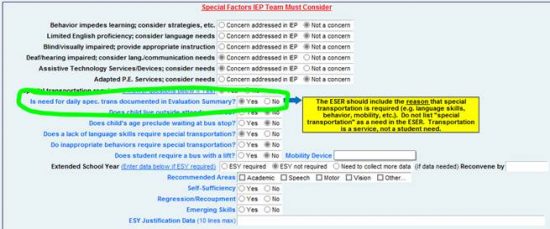Q: As case manager, what paperwork am I responsible for submitting to Central Office?
A: Case managers are ultimately responsible for ensuring that ALL necessary IEP and ESER paperwork is submit-ted to Central Office after a meeting is held. Here are a few things to keep in mind:
– Use the IEP checklist in the database, and include it with your paperwork when you send it in to Darla or Rebecca. This makes everyone’s life easier as our secretaries can quickly glance at the checklist to see which paperwork they should expect to find in the envelope. If there are any special circumstances or oddities with your paperwork, the IEP checklist is a great place to jot the secretaries a quick note.
– If you are waiting on another member of the IEP team to complete their portion of the paperwork (for example an individual report that is part of the ESER), don’t let that delay the rest of the paperwork process. Submit what paperwork you have to Central Office, and make a note on the checklist that the particular report is not yet complete so that Darla and Rebecca can follow up with the appropriate personnel to ensure that the paperwork gets submitted. (Related Services Providers—please note that individual reports should be complete prior to the ESER meeting).
– In situations where there are multiple personnel working on a set of paperwork (e.g. you’re working with your school psychologist to complete an FBA and BIP), make sure you are coordinating with the rest of the team to submit all of the necessary paperwork. The simplest way is to gather all of the paperwork at the school level, and then submit it as one complete packet to Central Office. If you do have multiple people sending paperwork into Central Office, make sure you communicate as a team to be certain that a complete set of paperwork is submitted. You can use the checklist amongst your school-based team to ensure that all necessary components are covered.
Q: Who fills out the information on an ESER?
A: Case managers are responsible for entering all IEP and ESER information in the database, unless the database specifically notes that it is the responsibility of someone else. Notable examples include the LD portion of the ESER which is the responsibility of the school psychologist, or any goals / objectives / progress reports that are associated with a related services (e.g. speech goals), which should be completed by the related services provider. The content of the Needs and Recommendations portion of the ESER should be determined by the IEP team as a whole, but entering that information into the database is the responsibility of the case manager.

